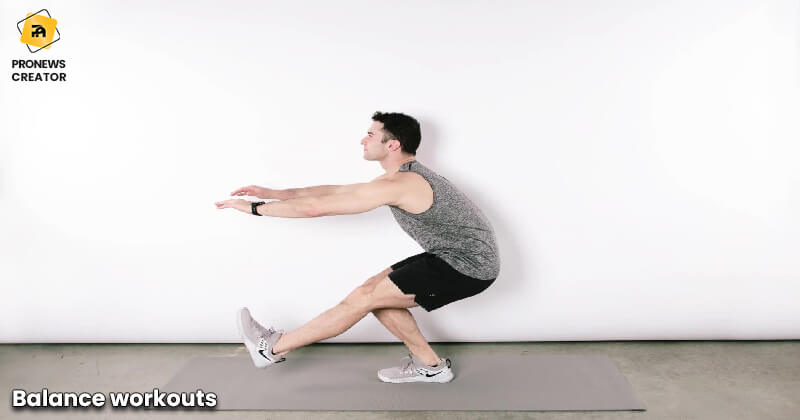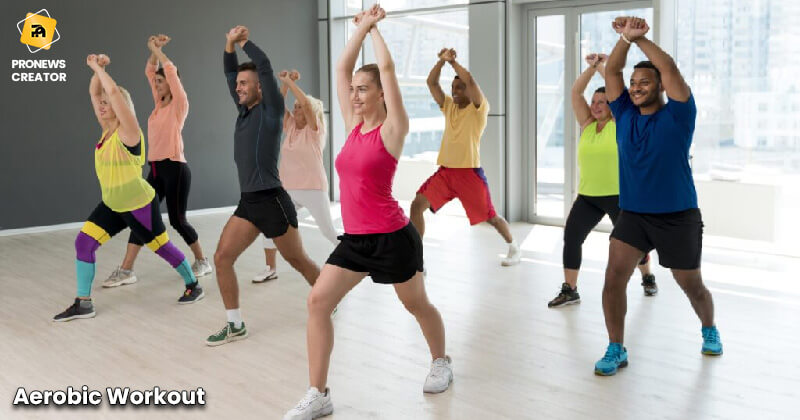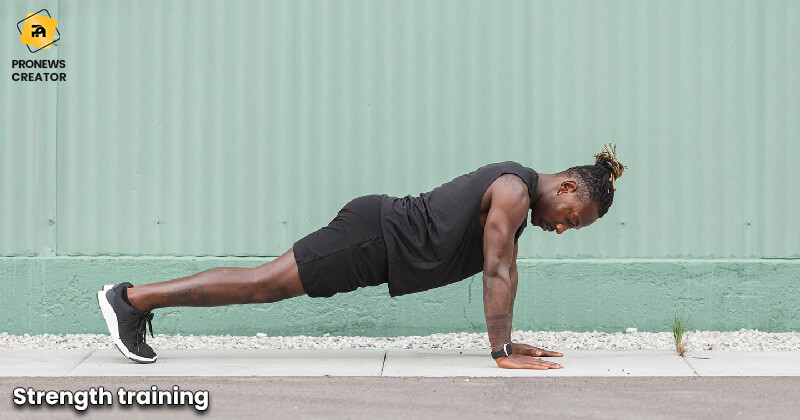Exercise is essential for sound health. Workouts that improve your strength, flexibility, balance, and aerobic capacity will keep you active, mobile, and feeling active.
The significance of different types of workouts aids in the development of a well-rounded physical experience, keeping your body on its toes.
You could be the type of person who enjoys jogging, cycling, or other cardiac activity. Perhaps you enjoy yoga or other calmer pursuits.
This article will discuss the many sorts of workouts and why variety in your fitness program is crucial.
What exercises can we do at home?
Some people respond by mentioning several sorts of physical activity, such as jogging, swimming, walking, or weight lifting.
They can also exercise at home by doing aerobics, stretching, strengthening, and balancing activities.

Summary of different types of workouts with their benefits
We’re here to assist and achieve your fitness goals; below is a list of different types of workouts and their advantages.
1. Balance workouts
Balance is crucial for all capable bodies, not just athletes. We would struggle to stand up straight without good balance, let alone stroll to the store or begin lifting weights!
Balance rarely receives a dedicated workout. Balance-focused activities can help enhance your general health and fitness while contributing to larger fitness goals.
Benefits of balance workouts
| Improve stability | |
| Enhance posture | Sweeten speed and reactions |
| Minor chance of falling and, therefore, less chance of injuries |

2. Flexibility training
Flexibility is more than just being able to touch your toes; it also refers to musculoskeletal health.
While some people are born with inherent flexibility, that doesn’t mean those who aren’t are bound to lack it.
Stretching exercises, for example, are sometimes overlooked or dismissed as ‘not legitimate’ exercises because the exertion appears to be low at first glance.
Benefits of flexibility training
| Avoid damaging joints and muscles | Avoid long-term, chronic problems |
| Improve posture | Increase range of motion |
| Lower stress levels |

3. Aerobic Workout
Aerobic exercise, often called cardio or endurance exercise, raises your heart and respiratory speed.
Aerobic exercise can also strengthen specific muscles and boost bone density, depending on the form of exercise you choose.
Running, jogging, cycling, swimming, rowing, walking, hiking, and stair climbing are examples of aerobic workouts.
Benefits of Aerobic Exercise
| Aid in weight loss or maintenance of healthy body weight | Strategy to burn calories |
| Promotes cardiovascular health | It can help avoid heart disease, stroke, hypertension, and even certain malignancies |

4. Endurance workouts
Endurance activities are to increase your heart rate and make your blood pumping more quickly.
Endurance workouts are essentially cardio workouts that work your body aerobically.
An endurance workout aims to increase the number of times your muscles contract before becoming fatigued.
Benefits of Endurance Workouts
| Descending blood pressure and sleeping heart rate | Improve metabolic rate |
| Burn fat | Reduce cases of cardiovascular disorders, including diabetes and heart disease |
| Enhance mental well-being | Enhance aerobic wellness |

5. Yoga
Yoga now has as many different styles as there are sportswear brands. Some of the most well-known are Hatha, Ashtanga, Iyengar, hot yoga, vinyasa flow, Kundalini, and yin.
The integration of body and breath through stretching, isometric bodyweight movements, and moving meditation is all of these practices have in common.
Benefits of Yoga
| Frequent practice will help mobilize joints | Stretch ligaments |
| Support muscles |

6. Weight training
A widespread fallacy is that weight training will only result in one outcome: hypertrophy.
However, there are other goals that you can attain through resistance training using weights in the form of rep and set schemes, as well as percentages of your 1Rm (1 rep max) that you are lifting.
Benefits of weight training
| Increasing muscle mass | Strengthening joints reduces muscular imbalance issues. |
| Increasing bone density, important as women age due to the risk of osteoporosis | Increasing bone density, critical as women age due to the risk of osteoporosis |
| Building good posture |

7. Strength training
We lose muscle mass as we age. Strength training helps to rebuild it. Strength training regularly will make you feel more confident and capable of carrying groceries, gardening, and moving heavy objects around the house.
Benefits of strength training
| it helps you stand up from a chair, get up from the floor, and go upstairs | it stimulates bone growth |
| it lowers blood sugar | it strengthens your muscles and makes you stronger |
| it improves balance and posture | it reduces stress and pain in the lower back and joints. |
| it aids in weight control |

Why Is It Important to Vary Your Workout Routine?
Performing different types of workouts and exercises is the method to ensure you’re providing your body with the stimuli it needs to trigger adaptations in your body systems and fitness components.
Because your body can never become too comfortable or adapted to your routines, it can prevent fitness and weight loss plateaus.

How much exercise should I do daily?
Adults should engage in at least 30 minutes of endurance activity, such as walking or running.
They should also include two or three bouts of strength training every week. A healthy adult could also consider stretching for flexibility and working on their balance.
If you’re preparing for a half or full marathon, you’ll run considerably longer than 30 minutes daily.

Final words
We’re all aware that exercise has numerous advantages.
These range from improved heart health and increased strength to improved posture and core stability, to mention a few.
Adults with different types of workouts have a lower risk of getting bladder, breast, colon, endometrial, oesophagus, kidney, lung, and stomach ailments.
Exercise diverts us from our daily problems and improves our sleep habits.


